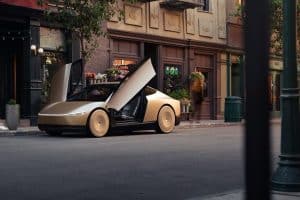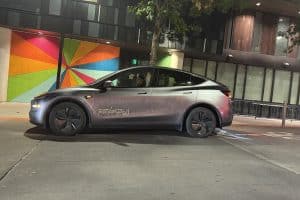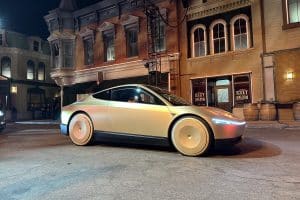- 🤖 Tesla unveiled new designs including Robotaxi, Optimus, and Robovan at the ‘We, Robot’ event.
- 🎬 “I, Robot” director Alex Proyas accused Tesla of copying his film’s robot designs.
- 🗣️ The accusations were met with skepticism, as many argued design overlap is common and not necessarily intentional.
- 🚙 Tesla’s Cybercab design is inspired by its own Cybertruck, indicating an internal influence rather than external.
- 🌐 The controversy highlights the event’s wide-reaching impact and media attention.
In a rapidly evolving tech landscape, Tesla remains at the forefront of exciting automotive innovation. In a recent showcase, Tesla unveiled groundbreaking designs for its Robotaxi, Optimus, and Robovan during the much-anticipated ‘We, Robot’ event. While the designs were instrumental in cementing Tesla’s vision for a self-driving future, they were not without controversy. Notably, Alex Proyas, the director of “I, Robot”, accused Tesla of emulating the aesthetic from his 2004 blockbuster film. Let’s delve into the details and explore the broader implications of these claims.
Tesla’s Groundbreaking Unveiling
The ‘We, Robot’ Event
On October 10, Tesla showcased its latest innovations at the Warner Bros. Studios in Los Angeles. The event drew significant attention, not only from Tesla enthusiasts but also from critics questioning the originality of the designs.
New Designs: A Leap Towards the Future
- Robotaxi: The Robotaxi signals Tesla’s ambitious move towards a future dominated by autonomous cars. Emphasizing safety, efficiency, and style, it aspires to revolutionize urban transport.
- Optimus: As Tesla’s humanoid robot, Optimus is a testament to the company’s venture into robotics, promising functionalities that support both industrial and personal use.
- Robovan: With a design purportedly influenced by the Cybertruck, the Robovan offers a robust solution for transporting goods while embracing the electric vehicle future.
The Controversy: Imitation or Inspiration?
The Accusations
Alex Proyas, known for creating a cinematic world dominated by humanoid robots, accused Tesla of borrowing aesthetic elements from “I, Robot”. This claim sparked an internet debate, challenging Tesla’s inventive prowess.
Community Reaction
- Skepticism and Debate: Many in the community dismissed Proyas’s accusations, pointing to the commonality of design parallels in the tech and automotive industries. They argued that design convergence shouldn’t be equated with intellectual theft.
- Design Similarities: It’s important to recognize that similar design themes, such as utilitarian shapes and sleek, futuristic aesthetics, are widespread across different mediums and industries.
Analyzing the Impact
Media Attention and Public Discourse
This controversy has amplified Tesla’s visibility, underscoring the pivotal role media plays in shaping public perception. The discussion has highlighted the broader question of originality in the technology and automotive fields.
Influence on Tesla’s Brand
Despite the controversy, Tesla’s ability to attract monumental attention underscores its role as an industry leader. Innovative design and marketing continue to propel Tesla forward, engaging both fans and critics.
Conclusion: Innovation Drives Debate
In the end, Tesla’s newest designs have sparked an important conversation on the nature of innovation and inspiration. Whether these designs are derivative or cut from new cloth, they represent a significant step in Tesla’s vision for the future. As Tesla continues to stretch the boundaries of possibility, such debate only serves to highlight the dynamic field of technology and design.





